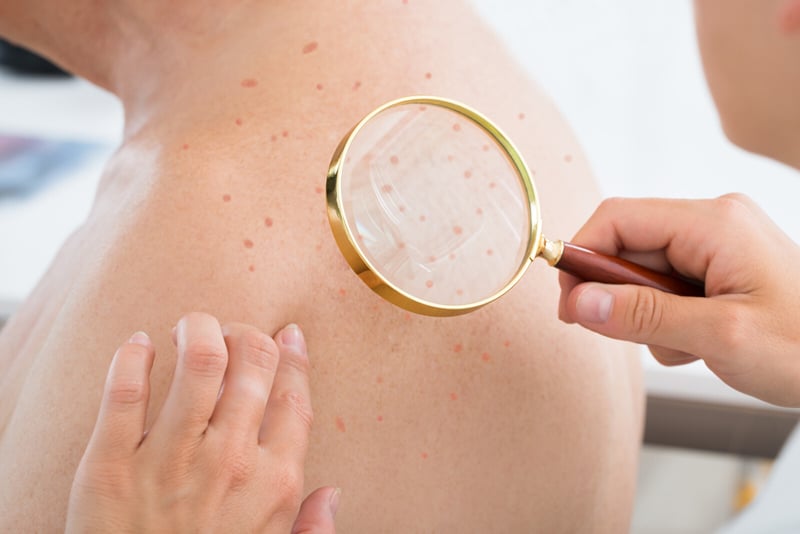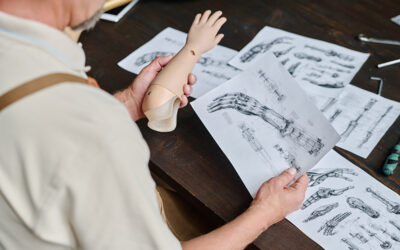In an era of value-based reimbursements, rising overheads, changing codes, and increased scrutiny of claims by health insurance companies, dermatology medical billing and coding has become quite complex. Dermatology practices need to overcome the challenges of documentation and coding and meeting payer guidelines to get paid.
Actinic keratosis (AK) is one of the most common conditions that older patients present with in dermatology practices. Also known as solar keratosis, AK is a precancerous skin growth that develops due to excessive exposure to the sun’s UV rays or due to indoor tanning. When reporting this condition, physicians need to make sure that their documentation supports coding and billing. Clinical documentation of keratosis should specify the following:
- Type of keratosis—actinic or seborrheic
- Whether the keratosis is inflamed (or not otherwise specified)
- Location of the growths
- Causes (such as tanning bed exposure)
Actinic Keratosis vs. Seborrheic Keratosis
Actinic keratosis presents as a small, rough patch on the skin and can develop into skin cancer. It usually affects fair-skinned individuals, those with excessive sun exposure, or those who have been exposed to indoor tanning radiation. Most people develop several of these premalignant lesions.
Seborrheic keratosis (SK) usually presents as a brown, black or light tan growth on the face, chest, shoulders or back. One of the most common benign skin growths in older adults, SK involves only the top layers of the epidermis. SKs have a waxy, overgrown, darkened surface and increase in number with age. The exact cause of seborrheic keratoses is not known, inheritance may play a role (Mayo Clinic).
Diagnosis and Treatment
Both AK and SK can be diagnosed by examining the area. Clinicians can differentiate these lesions by examining their appearance. However, biopsy may be recommended to confirm diagnosis.
Surgical curettage is the treatment for both AK and SK. Though no treatment is needed for SK, electrocautery or shave excision may be recommended if there is risk of irritation or infection due to friction. In addition to cutting away of the skin growth, treatment options for AK include cryosurgery (freezing), laser surgery, chemical peels, or photodynamic therapy.
ICD Codes
The ICD-10 codes available to report actinic keratosis and seborrheic keratosis are in different subcategories: L57.0 Actinic keratosis and L82.- Seborrheic keratosis
- L57.0 Actinic keratosis
L57.0 includes keratosis not otherwise specified, solar keratosis, and senile keratosis. An additional code should be reported to identify the source of the ultraviolet radiation with codes W89.- (exposure to man-made visible and ultraviolet light) or X32.- (exposure to sunlight).
L57 Skin changes due to chronic exposure to nonionizing radiation
-
- L57.0 Actinic keratosis
- L57.1 Actinic reticuloid
- L57.2 Cutis rhomboidalis nuchae
- L57.3 Poikiloderma of Civatte
- L57.4 Cutis laxa senilis
- L57.5 Actinic granuloma
- L57.8 Other skin changes due to chronic exposure to nonionizing radiation
- L57.9 Skin changes due to chronic exposure to nonionizing radiation, unspecified
Other codes associated with L57.0 are:
L56 Other acute skin changes due to ultraviolet radiation
-
- L56.0 Drug phototoxic response
- L56.1 Drug photoallergic response
- L56.2 Photocontact dermatitis [berloque dermatitis]
- L56.3 Solar urticaria
- L56.4 Polymorphous light eruption
- L56.5 Disseminated superficial actinic porokeratosis (DSAP)
- L56.8 Other specified acute skin changes due to ultraviolet radiation
- L56.9 Acute skin change due to ultraviolet radiation, unspecified
- L58 Radiodermatitis
-
- L58.0 Acute radiodermatitis
- L58.1 Chronic radiodermatitis
- L82 – Seborrheic keratosis
-
- L82.0, inflamed seborhheic keratosis
- L82.1, other seborhheic keratosis
The Excludes II note for sub category L82 states that codes for seborrheic dermatitis (L21-) may be cited in addition to the L82 code, if the documentation supports both.
- D48.5 Neoplasm of uncertain behavior of skin
2019 Actinic Keratosis Procedure Codes
The procedure code that best describes the procedure, the location and the size of the lesion should be used.
The 2019 CPT codes for Actinic Keratosis are as follows:
- 11300- 11313 Shaving of Epidermal or Dermal Lesions Procedures
- 11400-11446 Excision, Benign Lesion of Cutaneous Origin
Integumentary lesion excision codes (11400 – 11446) should be used to code a sebaceous cyst. This skin lesion may be very large, distending the skin and pushing into the subcutaneous fatty tissue.
11400-11446 should be used when the excision is a full-thickness (through the dermis) removal of a lesion, including margins, and includes simple (non-layered) closure. Code assignment should be based on the size of the cyst (American Academy of Dermatology).
Other codes:
- 15788 Chemical peel, facial; epidermal
- 15789 Chemical peel, facial; dermal
- 15792 Chemical peel, nonfacial; epidermal
- 15793 Chemical peel, nonfacial; dermal
- 17000 Destruction (e.g., laser surgery, electrosurgery, cryosurgery, chemosurgery, surgical curettement), premalignant lesions (e.g., actinic keratoses); first lesion
- 17003 Destruction (eg, laser surgery, electrosurgery, cryosurgery, chemosurgery, surgical curettement), premalignant lesions (eg, actinic keratoses); second through 14 lesions, each (List separately in addition to code for first lesion)
- 17004 Destruction… 15 or more lesions
- 17110 Destruction (eg, laser surgery, electrosurgery, cryosurgery, chemosurgery, surgical curettement), of benign lesions other than skin tags or cutaneous vascular proliferative lesions; up to 14 lesions
- 17111 Destruction… 15 or more lesions
- 96567 Photodynamic therapy by external application of light to destroy premalignant and/or malignant lesions of the skin and adjacent mucosa (e.g., lip) by activation of photosensitive drug(s), each phototherapy exposure session
- 96573 Photodynamic therapy by external application of light to destroy premalignant lesions of the skin and adjacent mucosa with application and illumination/activation of photosensitizing drug(s) provided by a physician or other qualified health care professional, per day
- 96574 Debridement of premalignant hyperkeratotic lesion(s) (ie, targeted curettage, abrasion) followed with photodynamic therapy by external application of light to destroy premalignant lesions of the skin and adjacent mucosa with application and illumination/activation of photosensitizing drug(s) provided by a physician or other qualified health care professional, per day
When billing Medicare, providers should refer to the Correct Coding Initiative (CCI) edits for correct coding guidelines and specific applicable code combinations.
Documentation
Proper clinical documentation is crucial for dermatology medical billing and coding. The physician should document:
- The type of keratosis—actinic or seborrheic
- Whether the keratosis is inflamed (or not otherwise specified)
- The size and location of the growths
- Contributing factors, such as tanning bed exposure
- The treatment method—laser surgery, electrosurgery, cryosurgery, chemosurgery, or excision
As scrutiny for medical necessity is increasing for procedures on the skin, medical documentation must clearly and unambiguously establish the medical necessity for lesion removal. Documentation must also provide evidence that the skin lesion removal using one of the services listed in the CPT section (shaving, removal, destruction) was medically necessary. If medical necessity does not exist and service is determined to be cosmetic, the patient may have to pay for the service.
Knowledge of Medicare coding or billing requirements and medical necessity coverage guidelines is crucial to report diagnosis and treatment of actinic keratosis. Partnering with an experienced medical billing and coding company is the best option to submit accurate claims to improve the reimbursement and minimize denials.




